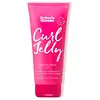What's inside
What's inside
 Benefits
Benefits

 Concerns
Concerns

 Ingredients Side-by-side
Ingredients Side-by-side

Water
Skin ConditioningPvp
Emulsion StabilisingPropylene Glycol
HumectantAlcohol Denat.
AntimicrobialOleth-20
CleansingPhenoxyethanol
PreservativeTriethanolamine
BufferingCarbomer
Emulsion StabilisingParfum
MaskingPolyquaternium-11
PEG/PPG-22/24 Dimethicone
EmulsifyingEthylhexylglycerin
Skin ConditioningPentasodium Pentetate
Limonene
PerfumingBenzophenone-4
UV AbsorberHexyl Cinnamal
PerfumingLinalool
PerfumingPEG-70 Mango Glycerides
EmulsifyingButyrospermum Parkii Butter
Skin ConditioningAmyl Cinnamal
PerfumingWater, Pvp, Propylene Glycol, Alcohol Denat., Oleth-20, Phenoxyethanol, Triethanolamine, Carbomer, Parfum, Polyquaternium-11, PEG/PPG-22/24 Dimethicone, Ethylhexylglycerin, Pentasodium Pentetate, Limonene, Benzophenone-4, Hexyl Cinnamal, Linalool, PEG-70 Mango Glycerides, Butyrospermum Parkii Butter, Amyl Cinnamal
Water
Skin ConditioningXanthan Gum
EmulsifyingGlycerin
HumectantPropylene Glycol
HumectantPhenoxyethanol
PreservativeAcrylates/Palmeth-25 Acrylate Copolymer
Parfum
MaskingPEG-40 Hydrogenated Castor Oil
EmulsifyingPolyquaternium-11
Aminomethyl Propanol
BufferingEthylhexylglycerin
Skin ConditioningBenzophenone-4
UV AbsorberCoumarin
PerfumingAlpha-Isomethyl Ionone
PerfumingLinalool
PerfumingCI 17200
Cosmetic Colorant
 Reviews
Reviews

Ingredients Explained
These ingredients are found in both products.
Ingredients higher up in an ingredient list are typically present in a larger amount.
Benzophenone-4 is a water-soluble chemical sunscreen.
It protects in the UV-B range, but is considered a secondary UV absorber. This means that it needs to be paired with other sunscreen ingredients to provide effective protection.
Typically, it's used in cosmetic products to protect them from deterioration caused by UV rays. This is why you'll find it in a lot of products that aren't sunscreens.
Learn more about Benzophenone-4Ethylhexylglycerin (we can't pronounce this either) is commonly used as a preservative and skin softener. It is derived from glyceryl.
You might see Ethylhexylglycerin often paired with other preservatives such as phenoxyethanol. Ethylhexylglycerin has been found to increase the effectiveness of these other preservatives.
Linalool is a fragrance and helps add scent to products. It's derived from common plants such as cinnamon, mint, citrus, and lavender.
Like Limonene, this ingredient oxidizes when exposed to air. Oxidized linalool can cause allergies and skin sensitivity.
This ingredient has a scent that is floral, spicy tropical, and citrus-like.
Learn more about LinaloolParfum is a catch-all term for an ingredient or more that is used to give a scent to products.
Also called "fragrance", this ingredient can be a blend of hundreds of chemicals or plant oils. This means every product with "fragrance" or "parfum" in the ingredients list is a different mixture.
For instance, Habanolide is a proprietary trade name for a specific aroma chemical. When used as a fragrance ingredient in cosmetics, most aroma chemicals fall under the broad labeling category of “FRAGRANCE” or “PARFUM” according to EU and US regulations.
The term 'parfum' or 'fragrance' is not regulated in many countries. In many cases, it is up to the brand to define this term.
For instance, many brands choose to label themselves as "fragrance-free" because they are not using synthetic fragrances. However, their products may still contain ingredients such as essential oils that are considered a fragrance by INCI standards.
One example is Calendula flower extract. Calendula is an essential oil that still imparts a scent or 'fragrance'.
Depending on the blend, the ingredients in the mixture can cause allergies and sensitivities on the skin. Some ingredients that are known EU allergens include linalool and citronellol.
Parfum can also be used to mask or cover an unpleasant scent.
The bottom line is: not all fragrances/parfum/ingredients are created equally. If you are worried about fragrances, we recommend taking a closer look at an ingredient. And of course, we always recommend speaking with a professional.
Learn more about ParfumPhenoxyethanol is a preservative that has germicide, antimicrobial, and aromatic properties. Studies show that phenoxyethanol can prevent microbial growth. By itself, it has a scent that is similar to that of a rose.
It's often used in formulations along with Caprylyl Glycol to preserve the shelf life of products.
We don't have a description for Polyquaternium-11 yet.
Propylene Glycol is an odorless, colorless liquid. As a humectant, it helps skin retain moisture. It also aids in delivering active ingredients.
Another role of this ingredient is preventing a product from melting or freezing. Propylene glycol also adds antimicrobrial properties to a product, elongating product lifespan.
This ingredient is considered an organic alcohol and commonly added into both cosmetics and foods.
Those with sensitive skin or conditions may develop a rash when using this ingredient.
Learn more about Propylene GlycolWater. It's the most common cosmetic ingredient of all. You'll usually see it at the top of ingredient lists, meaning that it makes up the largest part of the product.
So why is it so popular? Water most often acts as a solvent - this means that it helps dissolve other ingredients into the formulation.
You'll also recognize water as that liquid we all need to stay alive. If you see this, drink a glass of water. Stay hydrated!
Learn more about Water